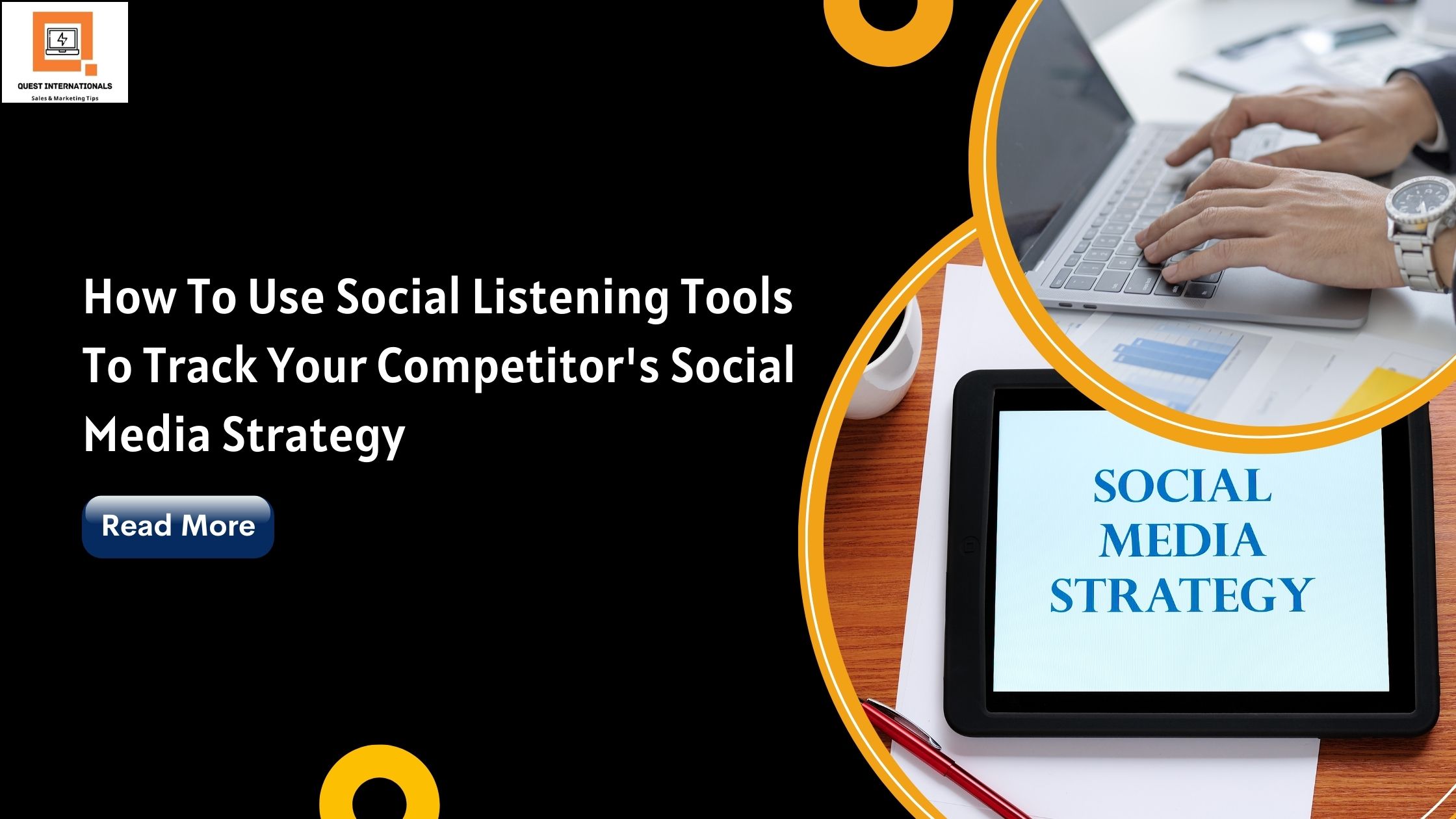Table of Contents
ToggleSocial listening is a valuable tool for businesses that want to stay on top of their online presence. To learn how to use social listening, businesses can take advantage of the many resources available online or seek the guidance of a social media expert. Additionally, social listening(SL) tools are online tools that allow businesses to monitor and analyze social media platforms for mentions of their brand, products, industry, and competitors. By using these tools, businesses can track what people are saying about their brand, monitor industry trends, and keep an eye on their competitor’s social media activity.
Moreover, tracking your competitors’ social media strategy is crucial for any business looking to stay ahead in today’s competitive market. By keeping a watchful eye on your competitors’ social media activity, you can gain valuable insights into their marketing tactics, content strategy, customer engagement techniques, and more. In order to achieve this, different types of social listening tools can come in handy, including sentiment analysis tools, brand monitoring tools, social media analytics tools, and more. With this information, you can improve your own social media strategy, gain a competitive edge, and stay up-to-date on industry trends.
In this blog post, we will provide a step-by-step guide on how to use social listening tools to track your competitor’s social media strategy. We will start by identifying your competitors and selecting the right SL tool for your business. Then, we will guide you through the process of setting up your social listening tool and tracking your competitors’ social media activity. Finally, we will show you how to leverage the insights you gather to improve your own social media strategy and gain a competitive advantage.
How to use social listening tools to Identify Your Competitors

A. Defining your business niche: The first step in identifying your competitors is to define your business niche. You should have a clear understanding of your product or service offerings, your target audience, and your unique selling proposition (USP). This will help you identify businesses that offer similar products or services and are targeting the same audience.
B. Identifying your competitors: Once you have a clear idea of your business niche, you can start identifying your competitors. You can do this by conducting market research and analyzing your industry landscape. You can use online search engines, social media platforms, and business directories to search for businesses that are offering similar products or services as yours. Additionally, you can attend industry events, conferences, and trade shows to meet other businesses in your industry and learn more about their offerings. One important aspect of market research is using types of social listening tools to track and monitor your competitors’ online activities and customer feedback.
C. Creating a list of competitors to track: After identifying your competitors, you should create a list of businesses that you want to track. You can prioritize the list based on their market share, social media presence, or any other criteria that you consider important. This list will be useful in setting up your SL tool and monitoring your competitors’ social media activity.
By following these steps, you can identify your competitors and create a list of businesses that you want to track using SL tools. This information will be invaluable in keeping track of your competitor’s social media strategy and gaining insights into their marketing tactics. Additionally, learning how to use social listening can help you monitor brand mentions, identify customer pain points, and track industry trends in real time.
Choosing the Right Social Listening Tools: How to Use Social Listening to Enhance Your Strategy
A. Explanation of different SL tools: There are several best social listening tools available in the market. These tools range from free to paid and offer different features and functionalities. Some popular social listening tools include Hootsuite Insights, Sprout Social, Brandwatch, Talkwalker, and Mention.
B. How to select the right tool for your business: There are several SL tools available in the market. When selecting the best social listening tools, there are several factors to consider. First, you should consider your budget and determine how much you are willing to spend on a social listening tool. Second, you should consider the features and functionalities offered by each tool and determine which tool offers the features that are most important to your business. Third, you should consider the ease of use and the user interface of each tool. Finally, you should consider the customer support offered by each tool and the level of customer service you can expect.
C. Overview of popular SL tools: There are several popular social listening tools available in the market. Hootsuite Insights is a popular social listening tool that allows businesses to monitor social media platforms, track keywords and hashtags, and analyze social media trends. Sprout Social is another popular social listening tool that offers features like social media monitoring, audience engagement, and analytics.
By understanding how to use social listening and the different SL tools available in the market, and considering the factors that are most important to your business, you can select the right tool for your needs. The right social listening tool will help you track your competitors’ social media activity, gain valuable insights into their marketing tactics, and improve your own social media strategy.
Setting Up Your Social Listening Tool
A. Connecting your social media accounts: The first step in setting up your social listening tool is to connect your social media accounts. This will allow the tool to monitor your own social media activity and that of your competitors.
B. Setting up monitoring keywords: The next step is to set up tracking keywords. These keywords should be relevant to your business and should include your brand name, product name, industry keywords, and competitor names. This will help you track mentions of these keywords across social media platforms.
C. Defining your target audience: You should also define your target audience in your social listening tool. This will help you filter out irrelevant mentions and focus on the conversations that are most relevant to your business. You can define your target audience by setting up filters based on demographics, location, and other criteria.
D. Filtering data: Finally, you should set up filters to help you manage the data that is collected by your social listening tool. You can filter data based on sentiment, reach, engagement, and other criteria. This will help you focus on the conversations that are most important to your business and gain valuable insights into your competitors’ social media strategies.
By following these steps, you can set up your social listening tool and start tracking your competitors’ social media activity. This information will be invaluable in improving your own social media strategy and gaining a competitive advantage in your industry.
Conclusion
In today’s digital age, social media has become an essential tool for businesses to reach and engage with their target audience. Furthermore, by tracking your competitors’ social media strategy, you can gain valuable insights into their marketing tactics. This will allow you to identify areas for improvement in your own strategy and as well as stay ahead of the competition.
Social listening is an essential practice for any business looking to succeed in today’s digital landscape. In fact, social listening tools offer a range of benefits to businesses. Firstly, they provide the ability to monitor brand reputation and track social media mentions. Additionally, they enable businesses to analyze social media trends and gain insights into competitors’ social media strategies. Ultimately, social listening can be used to make informed decisions about a company’s social media strategy and to stay competitive in its industry.
If you’re not already using social listening tools to track your competitors’ social media activity, now is the time to start. Additionally, by selecting the right tool, setting it up correctly, and defining your target audience, you can gain valuable insights into your competitors’ social media strategy. With this information, you can improve your own social media marketing efforts by monitoring keywords and staying up-to-date with the latest trends in your industry.




